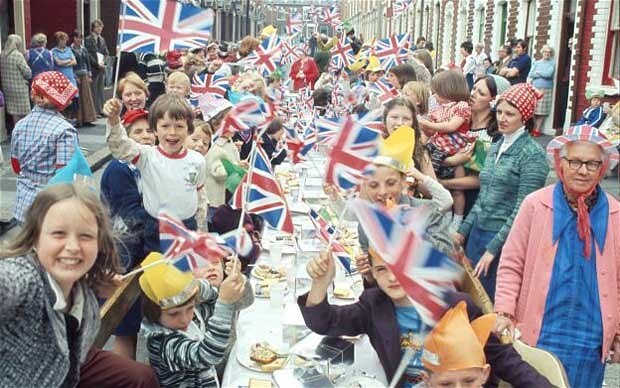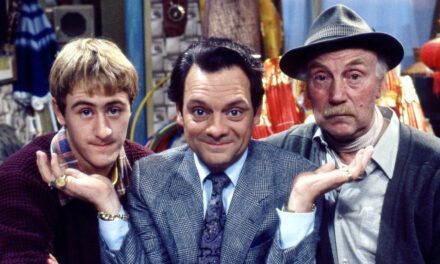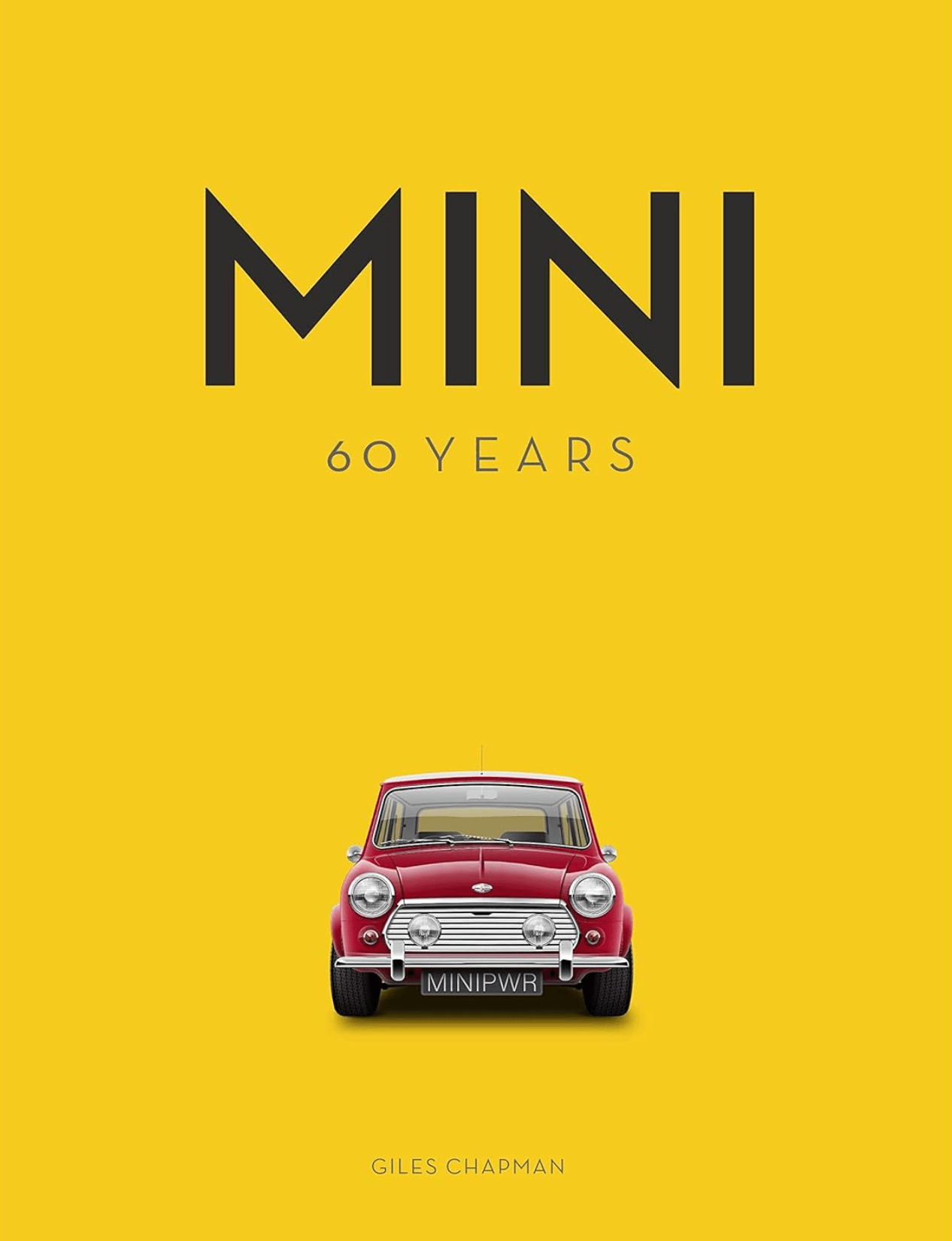The year 1977 was one of contrasts for the United Kingdom. As the Queen’s Silver Jubilee sparked nationwide celebrations of her 25 year reign, the country still grappled with economic uncertainties and social divisions. Politics remained mired in the stagnant economy and trade union conflicts. Yet in popular culture, the emergence of punk rock and blockbuster films provided distraction and escapism for a weary public.
Queen Elizabeth II marked her Silver Jubilee in 1977, honoured through various ceremonies and tributes commemorating her quarter century on the throne. The Jubilee provoked a surge of patriotism and appreciation for the monarchy’s continuing role in British society. Major events included the Queen touring the country in her Jubilee Walks, a service at St Paul’s Cathedral, and the Jubilee Parade through London on June 7th. Across Britain, street parties and festivities offered a brief respite from the challenges of daily life.
Meanwhile, James Callaghan’s Labour government continued efforts to address inflation and high unemployment amid a backdrop of strained labor relations. The economy showed flickers of recovery following 1976’s IMF crisis bailout, but remained burdened by industrial actions like strikes by hospital workers and firefighters. Scotland’s failure to ratify a devolution referendum further spotlighted national divisions, though optimism emerged over breakthroughs in Northern Ireland peace talks.
In popular culture, 1977 saw punk rock blast into the mainstream, led by the notorious Sex Pistols. With its songs of anarchy and rebellion, punk reflected the disaffection of British youth. Musically and stylistically radical, punk bands were both vilified and idolised for their subversiveness. Beyond music, cinema offerings provided escapism through blockbusters like Star Wars and Saturday Night Fever. Television was also transformed with groundbreaking productions like the BBC’s adaptation of John le Carré’s Tinker Tailor Soldier Spy.
So 1977 encapsulated both the continuing malaise and glimmers of hope on Britain’s rocky path through the 1970s. As the Queen’s Jubilee spotlighted tradition, punk culture revealed an impatient new generation. The country still faced grave problems, yet its resilient spirit and thriving arts scene persisted.

Music
Sex Pistols’ “God Save the Queen” Shocks and Captivates Britain
In May 1977, punk rock provocateurs the Sex Pistols released their incendiary single “God Save the Queen” to coincide with Queen Elizabeth II’s Silver Jubilee celebrations. With its irreverent lyrics skewering the monarchy and mocking deference, the song generated enormous controversy and cemented the band’s notoriety. Yet it also exemplified the irreverent spirit of punk in confronting British cultural taboos.
By 1977, the Sex Pistols had already caused uproar in Britain with their aggressive music and behaviour under manager Malcolm McLaren. When their record company learned of plans to release “God Save the Queen” during the Jubilee, they dropped the Pistols in outrage. Yet the single still came out on Virgin Records on May 27, sticking to the timing McLaren orchestrated for maximum provocation.
With lines declaring “God save the queen, she ain’t no human being” and “there’s no future in England’s dreaming,” the snarling song lambasted the monarchy as fascist and obsolete. Johnny Rotten’s scathing vocals were delivered over a furious punk rock soundtrack. The record sleeve featured a defaced image of the Queen with obscene graffiti.
The BBC refused to play the single, yet it reached #2 on the official charts. However, many suspected its sales figures were suppressed to keep it from hitting #1 during the Jubilee week. Regardless, the Pistols succeeded in providing an anarchic counterpoint to state-sponsored patriotism.
Conservatives and traditionalists were outraged. Angry nationalists attacked punk fans and damaged stock of some record stores selling the single. But for youth rejecting rigid cultural authority, the Pistols represented a breath of fresh if rebellious air.
While McLaren admitted hoping to cause “chaos and havoc,” Rotten later revealed the song targeted the cultural construct of the Queen as a concept, not her as an individual. Nonetheless, lines like “she ain’t no human being” ensured controversy and cemented punk rock’s disruptive place in the cultural imagination.
The defiant spirit captured in “God Save the Queen” epitomised the punk movement’s challenge to established norms through unbridled lyrical expression and raw music that gave voice to social frustrations. With this lightning rod of a song, the Pistols left an indelible mark on 1977 that still resonates.
Queen Of Our Times is the definitive biography of Queen Elizabeth II by one of Britain’s leading royal authorities, Robert Hardman. This commemorative edition includes an epilogue reflecting upon Her Majesty’s Platinum Jubilee, her passing and her funeral.
With fascinating revelations from those who knew her best and special access to unseen royal papers granted by Elizabeth II herself, author and royal expert Robert Hardman explores the full, astonishing life of our longest reigning monarch in this authoritative yet intimate biography.
David Bowie’s Berlin Trilogy Yields Masterful “Low” and “Heroes”
In 1977, David Bowie released the first two instalments of his acclaimed Berlin Trilogy – Low in January and “Heroes” in October. Recorded near Berlin with producer Tony Visconti and synth pioneer Brian Eno, the experimental albums marked a new creative peak for Bowie as he immersed himself in the city’s avant-garde culture.
Following years spent in Los Angeles, Bowie moved to Berlin in 1976 to kick a cocaine addiction and escape the limelight. There, he was inspired by the city’s art scene, nightlife and bleak Cold War tension. Challenging himself artistically, he began recording Low in France with Eno.
Low revealed Bowie radically reinventing his sound, melding art rock, electronic and ambient. Songs like “Sound and Vision” and “Be My Wife” boasted tight rock arrangements, while instrumentals like “Warszawa” pioneered moody electronic textures. Lyrically, Low has been described as Bowie’s “song cycle of depression.”
Low’s cavernous production was as revolutionary as its mix of rock minimalism and synthetic sonic landscapes. Visconti’s enveloping mixes and Eno’s EMS synthesisers and tape loops contributed to its futuristic but foreboding mood. The album’s innovation and cohesion made it hugely influential on post-punk and electronic music.
Though Low baffled some longtime fans, Bowie continued his experimental trajectory on “Heroes”, recorded that summer at Berlin’s Hansa Studio by the Wall. The album saw Bowie grappling with conflicted romances and psychic disconnection in the city’s isolating environment.
The title track “Heroes”, built on layers of guitars and synth effects, has become one of Bowie’s signature songs. Its lyrical story of two lovers who find freedom amidst Berlin’s gloom reflected the album’s themes. Other standouts included “Sons of the Silent Age” and “V-2 Schneider”.
With Low and “Heroes”, Bowie honed a minimalist, emotionally rich art rock that embraced electronic and ambient aesthetics. The creative risks he took were rewarded with two of the most revered works of his prolific output. For Bowie, Berlin itself became his unstable muse.

Rod Stewart Scores First UK No.1 with Poignant Ballad
In 1977, Rod Stewart secured his first #1 hit on the UK Singles Chart with his cover of the tender ballad “I Don’t Want to Talk About It.” Originally written and recorded by songwriter Danny Whitten, Stewart’s soulful rendition of the melancholy tune connected with audiences and exemplified his musical evolution.
By 1977, Stewart had already achieved major success both with The Faces and as a solo artist. However, while he notched several top 10 hits, a chart-topping single had eluded him in his home country. His iconic vocals were better known for belting out upbeat rockers and bluesy stompers.
With “I Don’t Want to Talk About It”, Stewart demonstrated growth as an emotive balladeer capable of wringing every last bit of feeling from a lyric. His signature raspy voice resonates with heartache and resignation on lines like “I can’t tell my right from my left and my head from my toes.”
Stewart’s version expands on the understated folky original, backed by piano, strings, and soft drums building to a subtle yet stirring crescendo. The sumptuous but restrained arrangement perfectly supports his vocal reading that reveals new depths.
The single connected with audiences upon its 1977 release, topping the UK charts for four weeks in June and July. It later reached the top 10 again on re-release in 1989, confirming the enduring appeal of Stewart’s sensitive performance.
“I Don’t Want to Talk About It” emerged during a transitional period for Stewart as he navigated evolving musical trends. Its subtle power demonstrated his ability to successfully craft pop that retained his authenticity.
The single remains a fan favourite and a poignant highlight in Stewart’s catalogue. His first chart-topper endures as one of his finest moments, harnessing simple production and raw emotion to create a moving musical statement.
Rod Stewart was born the working-class son of a Scottish plumber in North London. Despite some early close shaves with a number of diverse career paths, ranging from gravedigging to professional football, it was music that truly captured his heart - and he never looked back.
Rod's is an incredible life, and here, thrillingly and for the first time, he tells the whole thing, leaving no knickers under the bed. A rollicking rock 'n' roll adventure that is at times deeply moving, this is the remarkable journey of a guy with one hell of a voice - and one hell of a head of hair.
Entertainment
Star Wars Captivates Audiences and Becomes Global Pop Culture Phenomenon
The epic space fantasy film Star Wars premiered in May 1977, introducing audiences to George Lucas’ fantastical vision of an ancient battle between good and evil unfolding in a distant galaxy. Eventually becoming the highest-grossing film of 1977, Star Wars dazzled viewers with its mythic story, iconic characters, innovative special effects, and sheer cinematic spectacle.
Lucas spent years developing his original script inspired by science fiction serials, Japanese cinema, and mythological tropes. After securing a budget of $11 million from 20th Century Fox, filming commenced in 1976 utilising cutting-edge visual effects from Industrial Light and Magic.
When Star Wars opened in fewer than 40 theatres in May, the response was initially modest. However, positive reviews and word-of-mouth praise steadily built interest in the wholly original film. By the end of 1977, it had earned $220 million in the U.S. and £20 million in the UK, supplanting Jaws as the highest-grossing film at that time.
Much of the appeal lay in Lucas’ extraordinarily detailed and realised galaxy of alien species, mystical powers, grand battles, and faster-than-light travel. Groundbreaking visual effects transported audiences to locales like the desert planet Tatooine, site of Luke Skywalker’s fateful meeting with wise Jedi master Obi-Wan Kenobi.
Viewers were enthralled by the unlikely trio of Luke, Obi-Wan, and Han Solo as they battled the imposing Darth Vader and evil Empire. John Williams’ rousing orchestral score and sound design of beeps from trusty droids R2-D2 and C-3PO also became iconic.
As Star Wars fever gripped the public through 1977, the film spawned a merchandising bonanza of toys, posters, books and other products that earned billions. The term “blockbuster” took on new meaning with the film’s phenomenal box office success and cultural footprint.
Star Wars single-handedly revived both the science fiction genre and use of special effects, while launching one of cinema’s most lucrative franchises. By transporting spellbound audiences to galaxies far, far away, it forever altered the movie landscape.

Beloved British Children’s Series The Clangers Returns to Delight New Generation
In November 1977, the treasured British children’s animation The Clangers made its return to television screens after a seven year hiatus. Bringing back the adventures of the knitted alien creatures on their faraway planet, the revived series enchanted a whole new generation of young viewers just as the original run had in the late 1960s and early 1970s.
Created by Oliver Postgate and Peter Firmin, the original Clangers series of short films employed stop-motion animation and Postgate’s distinctive narration to tell whimsical stories about the mouse-like Clanger family and their friends. With its inventive design and storytelling, the show became a fixture of children’s programming during its initial 1968-1972 run.
By 1977, the rise of glossier and faster-paced children’s TV threatened to make The Clangers seem outdated. However, the warm reception given to an anniversary special earlier that year convinced Postgate and Firmin to produce a revived series that stuck to the charm and simplicity that made it so beloved.
Adding subtle new details like FIFA World Cup-style flagpoles in the village, the revival focused on timeless tales relevant to preschoolers. The Clangers’ innocence and wonder as they explored their peculiar planet or welcomed visitors remained centre stage, just as in the classic episodes.
Airing in the UK on ITV channels, the revived Clangers once again found a special place in children’s hearts through the late 1970s. Postgate’s familiar narration and Firmin’s knitted creations kept its handcrafted appeal intact even amidst changing trends in children’s entertainment.
For parents nostalgic for the original series, sharing The Clangers with their own kids created a generational bonding experience. Just as before, the Clangers’ creativity and generosity of spirit offered a gentle counterpoint to an often bewildering real world.
By staying true to its cherished roots, the return of The Clangers delighted both the young viewers discovering it and the adults who grew up with it the first time. The timeless charm woven into this iconic British children’s series endured into a new era.

1977 ‘Jubilee’ 11oz Two-Tone Ceramic Mug
Retro UK Years Mug Collection
Take a sip down memory lane with our Retro UK Years Mug Collection! Each mug in our collection celebrates a different year from the swinging ’60s to the electric ’80s, with a cheeky British twist that’s sure to start your morning with a grin.
Crafted from high-quality ceramic, these mugs are perfect for your daily cuppa, a cosy evening brew, or even a spot of afternoon tea with a side of history. Featuring iconic phrases and humorous quips that encapsulate the heart and soul of each year, these mugs are more than just drinkware—they’re conversation starters.
The Good Life Ushers in Acclaimed BBC Suburban Sitcom
The premiere of the suburban sitcom The Good Life on BBC One in April 1977 introduced British audiences to one of the most beloved and well-regarded comedy series of the 1970s. Starring Richard Briers and Felicity Kendal as a couple who try their hand at self-sufficient living much to their neighbours’ chagrin, the show delighted viewers and became a ratings hit for its entire 30 episode run until 1978.
The Good Life followed Tom and Barbara Good, played by Briers and Kendal, who ditch conventional life in Surbiton to become self-sufficient, much to the bemusement of their traditional neighbours Margo and Jerry Leadbetter. Briers excelled as Tom, whose enthusiasm for goat rearing, pig farming, and growing giant radishes is tempered by his constant tensions with the snobbish Margo. Kendal proved the perfect foil as Barbara, with her cheerful determination to embrace the rustic lifestyle.
The creators John Esmonde and Bob Larbey crafted The Good Life to gently satirise suburban values and consumerism in 1970s Britain. But the clever scripts and relatable characters ensured broad appeal. Viewers identified with the Goods’ attempts to stick to their newfound convictions despite hardships and social pressures.
Airing from 1975 to 1978, The Good Life drew praise for its stellar cast and writing that balanced incisive wit with warmth. It ranked among the most watched programs on British TV throughout its run. The final episode in 1978 was viewed by over 21 million, underlining its place as a ratings smash.
Propelled by its cross-generational appeal, The Good Life cemented its status as one of the BBC’s most popular and enduring sitcoms. Reruns have delighted new fans ever since, with its eccentric characters and cozy suburban setting providing the perfect antidote to modern stresses and complications. More than just a comedy, The Good Life became a beloved British cultural institution.

Culture
Britain Joyously Celebrates Queen’s 25 Years on Throne
In 1977, Queen Elizabeth II marked 25 years since her accession to the throne, a milestone commemorated through her Silver Jubilee celebrations across Britain. Major events honouring the monarch’s quarter-century reign took place throughout the year, allowing British subjects nationwide to offer tribute and thanks to the Queen. The Jubilee provoked an outpouring of appreciation for Elizabeth II’s continuing role as a stabilising force even amidst social turbulence and economic troubles.
Festivities kicked off in February with the Queen embarking on her Jubilee Tour of Commonwealth countries, where she was greeted by rapturous crowds. Returning to Britain in May, beacon lighting ceremonies and a Royal Procession through London officially commenced the national celebrations.
The Queen emphasised her desire for the Jubilee to be inclusive, saying “I want to thank you all for your warmth on this cold day and for contributing to the joyful atmosphere.” The people responded wholeheartedly, decorated streets with bunting and Union Jacks fluttering from every home.
Major events culminated in early June with the Jubilee Week itself. On June 7th, the 25th anniversary of Elizabeth’s coronation, a Service of Thanksgiving was held at St. Paul’s Cathedral attended by heads of state from across the world. The Queen then led a grand procession of coaches transporting all the crowned heads of Europe back to Buckingham Palace, where she appeared with her family on the balcony.
That evening, the Queen lit one of a series of beacons spreading across Britain and the Commonwealth, inaugurating 10,000 beacon fires and firework displays in her honour. She expressed hope the beacons would “remind us of the ties that bind us together in our communities, our counties, our country and the Commonwealth.”
Woven around these official events was a spirit of festivity embraced by people across the country. Authorised street parties were held in towns everywhere, evoking communal joy. Philip, Duke of Edinburgh noted “everywhere we went, people from all walks of life came out and stood in the streets and cheered and waved.”
With calls to “Bring out the bunting!”, people decked streets in red, white and blue, holding backyard barbecues and tea parties. Fancy dress parades for children added to the celebratory mood. For a brief spell, the Jubilee allowed Britons to put aside their worries and join in celebration of the Queen’s reign and service.
The outpouring of affection towards Elizabeth II confirmed her place in the hearts of the British public. Despite changing times, the Queen as a symbol of tradition and dignity continued to unite the people. The cheerful patriotism of the Jubilee symbolised that through 25 often turbulent years of social change, the Queen had remained a reassuring constant.
It's time to embrace the slower pace!
There's no denying it - you're OLD, but that comes with a lot of perks. You can say the most outrageous things and somehow get away with it. You can dress however you damn well please. And after learning from so many mistakes, you're now as wise as you are wizened. It's your time to recline, and this hilarious book will show you how it's done.
Glastonbury Festival Finds Its Legendary Home at Worthy Farm
In 1977, the Glastonbury Festival, which would grow to become the largest greenfield music festival in the world, found its permanent home when it relocated to Worthy Farm in Somerset, England. After having been held sporadically at different sites since its founding in 1970, Worthy Farm’s lush countryside and ample space allowed Glastonbury to blossom into the legendary five-day extravaganza of music, arts and culture it is today.
Worthy Farm was opened up as a festival venue by owner Michael Eavis, who had attended and been inspired by the first Glastonbury Fair in 1970. The festival came back for a second incarnation in 1971 before going on hiatus until 1979. With Britain’s festival scene growing, Eavis made Worthy Farm available as a gathering place for the music and arts.
The first Glastonbury Festival at Worthy Farm took place over two days in September 1977, a transitional event with a modest attendance. However, the beautiful countryside setting of the 600 acre dairy farm surrounded by the Pilton and Glastonbury hills proved the ideal landscape. Its natural amphitheater sloping down from the farmhouse provided a perfect performance space.
With three stages and quirky attractions like Arabian-style tents and tunnels built with old farm machinery, the festival site exemplified the hippie-era vibes that Glastonbury would amplify in later decades. The fresh location just 90 minutes from London helped generate greater interest and attendance as the festival grew.
Eavis recalled of Worthy Farm, “There was so much space and the hills provided a natural amphitheatre. It was perfect for music and it looked beautiful.” The lush pastures, medieval stone buildings and Tor views created a magical, otherworldly site far from the grind of daily life.
Over the years, Worthy Farm became synonymous with Glastonbury as legends were forged on its stages. Iconic performances from David Bowie, Muddy Waters, Blur and Beyoncé entered popular lore alongside tales of raucous crowds traipsing the farm’s mud-soaked trails. Today over 200,000 descend on Worthy’s green pastures annually to experience Britain’s biggest outdoor cultural event.
By finding its home at Worthy Farm in 1977, Glastonbury set the stage for its rise from a quaint hippie gathering to the cultural behemoth recognised across the world. Against the backdrop of Eavis’ farm emerged a one-of-a-kind British tradition still thriving today.

Soaring House Prices Spread Beyond London to Fuel National Housing Boom
In 1977, Britain’s housing market saw a dramatic extension of surging prices beyond the confines of London to cities and regions across the UK. While the capital had already experienced rapid house inflation earlier in the decade, 1977 marked a breakpoint where double-digit price hikes expanded nationally, signalling a housing boom erupting across the country.
After several years of economic instability, British home values entered a period of accelerated growth starting around 1975. However, by 1977, average prices from Brighton to Bristol had risen by 15-25%, dashing earlier notions that overheated growth would be confined to London and the Southeast.
Northern cities like Liverpool and Manchester saw values jump nearly 20%, while further afield the rise exceeded 20% in Wales and Scotland. Only Northern Ireland and the Northeast of England had price increases in the single digits, trailing the torrid national pace.
Experts pointed to declining mortgage rates, easing credit controls, and tax incentives for homeownership combining to spark a widespread scramble for housing. British tastes were also shifting towards home-buying over renting and new construction lagged demand. As one Halifax building society manager observed, “It has became a sellers’ market across wide areas.”
Average British home prices reached £9,439 by year’s end, up 18% from 1976. The surging values indicated that practically no corner of the country was left unaffected by the fevered demand for property.
However, the rewards of the boom were uneven, as tough lending criteria still excluded many buyers of modest means from joining in. Disparities between the winners and frustrated would-be buyers in the housing gold rush caused social tensions to rise in step with prices.
Nonetheless, headlines touting annual price jumps from Yorkshire to East Anglia fuelled perceptions of ever-ascending wealth from property. British home-buying looked increasingly like a one-way winning bet, fanning speculative psychology.
By late 1977, the government grew concerned the pace was becoming unsustainable. But piecemeal attempts at cooling measures had little impact on the powerful inflationary mix of limited supply and surging demand.
Fuelled by easy gains, the prospect of tax savings, and a cultural mania for homeownership, the great British housing boom showed no signs of slowing as it engulfed nearly all parts of the country by 1977. A psychology of getting in at all costs took hold, echoed by estate agents’ mantra warning “you snooze, you lose.”
Not For Turning is the first volume of Charles Moore's authorized biography of Margaret Thatcher, the longest-serving Prime Minister of the twentieth century and one of the most influential political figures of the postwar era.
Politics
Lib-Lab Pact Forged to Bolster Callaghan’s Faltering Government
In March 1977, Britain’s struggling Labour government under James Callaghan reached a critical deal with the Liberal Party to support them in key parliamentary votes in exchange for some policy concessions. This Lib-Lab Pact provided a vital lifeline for Callaghan’s minority government in the face of eroding public confidence and mounting industrial unrest. However, the controversial alliance also highlighted Labour’s vulnerability while failing to resolve the deeper economic issues dogging Britain.
Callaghan had led Labour to victory in 1974 but lost their parliamentary majority in the October election that year. By 1977, his government was sinking with inflation peaking at 15% and unions growing militant in the face of austerity measures. However, the opposition remained divided between the surging Conservatives under Margaret Thatcher and the weakened Liberals struggling for relevance.
Sensing an opportunity, Liberal leader David Steel proposed a pact with Labour to provide enough parliamentary seats to overcome the Tories in exchange for advancing Liberal policies on electoral reform and devolution. Despite reluctance within his party, Callaghan accepted the deal to stave off the need for a fresh election many thought Labour would lose.
The Lib-Lab Pact elicited howls from the Conservatives, who decried it as an undemocratic scheme to cling to power. However, it succeeded in its aim of allowing Labour to survive several key parliamentary votes over the following year that threatened to bring their government down. The Liberals also managed to secure modest electoral reforms as a result.
However, the pact provided only a temporary reprieve rather than reversing Labour’s slide. Infighting over the alliance worsened divisions in the party that would hasten their fall two years later. Moreover, propping up Callaghan failed to resolve the painful economic problems like high inflation that spurred discontent towards Labour.
By mid-1978, both sides let the Lib-Lab pact dissolve, leaving Labour to limp along as a minority government for another year before Margaret Thatcher’s Conservatives swept them from office in 1979. While necessary for Labour’s short-term survival, the controversial alliance did more to delay the end than reverse their waning fortunes.

Firefighters’ Disruptive Strike Mars Jubilee Celebrations
In May 1977, firefighters across Britain went on strike seeking higher wages just before the Queen’s Silver Jubilee celebrations, causing embarrassment and disruption for James Callaghan’s Labour government. The timing of the strike heightened tensions around the Jubilee while showcasing Labour’s ongoing struggles with trade unions.
By 1977, relations had badly soured between Britain’s firefighters and Labour, which was trying to impose pay restraints to control inflation. Seeking a 15% raise, firefighters opted for industrial action just days before the start of Jubilee events, overshadowing a national occasion meant to boost morale.
As beacons were being prepared for lighting ceremonies, most fire brigades halted work altogether or drastically reduced emergency cover. At a time of pageantry and street parties, the vital public service was compromised. The spectacle of firefighters picketing in uniforms contrasted with Jubilee bunting and celebrations.
Callaghan unsuccessfully urged firefighters to postpone the walkout, feeling its timing was insensitive when the nation came together. But the strikers remained determined as the government refused to improve their initial pay offer.
With minimal fire protection in place for Jubilee events, local authorities and the army scrambled to provide emergency response plans using troops and volunteers. The public mood was divided between supporting firefighters’ grievances and anger at perceived irresponsibility.
The strike also exacerbated divides within Labour over economic policy and union relations. Callaghan’s fragile minority government could ill afford disruption during a patriotic occasion meant to reunite Britain. But Labour infighting hindered an effective response.
After 11 days of severely curtailed fire protection, the government finally settled on improved terms under rising political pressure. But the dispute did lasting damage to Labour’s credibility and Callaghan’s slim hopes of re-election.
The firefighters’ Jubilee strike became a symbol of Labour’s inability to maintain public services and contain disputes even for national events. With the Conservatives positioning as a party of law and order, the turmoil was a gift to Margaret Thatcher.
Though firefighters achieved their aims, the long-term legacy was turning public opinion against uncontrolled union power. The episode added momentum to the coming Thatcher revolution and decline of union influence in Britain.
Described as 'everything ever in one gloriously ill-conceived ludicrously definitive outrageously luxurious Monty Python box set', this comprehensive collection of works by the cult comedy troupe includes: 'Monty Python's Flying Circus' (Complete Series 1-4, 45 episodes), 'And Now for Something Completely Different' (1971), 'The Holy Grail' (1974), 'The Life of Brian' (1979), 'Live at the Hollywood Bowl' (1982) and 'The Meaning of Life' (1983).
Scottish Devolution Hopes Dashed by Failed Referendum
In 1977, a landmark referendum was held on whether to establish a Scottish Assembly and grant greater powers to Scotland as part of the United Kingdom. While a slim majority voted yes, a controversial rule requiring 40% support of the full electorate meant the measure narrowly failed despite winning over those who voted. This thwarted hopes for Scottish devolution and self-governance for another two decades.
By the 1970s, discontent was growing in Scotland over economic decline and perceptions that the UK government in Westminster lacked concern for Scottish affairs. The discovery of North Sea oil off Scotland’s coast intensified demands for Scots to control the economic benefits.
The Labour government recognised this unrest and Prime Minister James Callaghan made a campaign pledge in 1974 to hold a referendum on forming a Scottish Assembly. This fulfilled growing desire for Scottish voices within a UK framework, stopping short of full independence.
The referendum was held in March 1977, asking voters to approve establishing an elected Scottish Assembly to make domestic policy decisions. The ballot spurred impassioned debate between pro-devolution advocates and those favouring continued UK parliamentary sovereignty.
On election day, 51.6% of voters chose yes for devolution. However, this fell short of meeting an additional requirement where at least 40% of the total electorate had to approve for the measure to pass. As turnout was only 63.6%, the total yes votes represented just 32.9%, denying victory.
Despite most voters choosing yes, the 40% rule dashed hopes for home rule. Recriminations followed against Westminster for imposing an arbitrary threshold many Scots saw as intentionally obstructing devolution. The failed referendum exposed simmering resentment over perceptions of Scottish marginalisation within the UK.
In the near term, the referendum’s failure took momentum away from autonomy efforts as Callaghan’s government fell two years later. However, the quest for Scottish devolution had been legitimised in the public mind. When another referendum passed by a large margin in 1997, the Scottish Parliament was successfully established after the long wait.
Though it would take 20 more years, the 1977 referendum paved the way by putting devolution on the agenda nationally. This stepping stone would help lead to Scotland gaining a political voice fitting its identity within a changing United Kingdom.

Sports
Virginia Wade Delights British Fans with Wimbledon Triumph
In 1977, British tennis star Virginia Wade claimed the Wimbledon women’s singles title in a dramatic final against Dutch foe Betty Stöve. This long coveted championship victory thrilled British fans on the tournament’s centenary year and marked the pinnacle of Wade’s distinguished career.
By Wimbledon 1977, the 32-year old Wade was already a legend in British tennis with 44 career titles. However, success at Wimbledon had frustratingly eluded her throughout the 1960s and early 70s, where she suffered gut-wrenching losses in two finals and frequent early upsets.
As the 100th Wimbledon approached, hopes grew that Britain’s greatest female player of the era could finally triumph at the most important event on home soil. Wade stirred excitement by reaching the semifinals without dropping a set to lineup a clash with fourth-seed Stöve.
The 1977 final unfolded as a three-set drama befitting the milestone occasion. After being blitzed 6–1 in the opening set, Wade responded like a champion, raising her level spectacularly to control the second 6-3. In the decider, the Brit relied on her big serve under pressure to squeeze past the Dutchwoman and seal a dramatic 4-6, 6-3, 6-1 victory.
An emotional Wade sank to her knees in joy before climbing into the stands to embrace her family members. The thrilled Centre Court crowd saluted Britain’s first ladies’ champion since Ann Jones in 1969. At long last, Wade had earned Wimbledon glory at the perfect time.
Beyond realising her career goal, Wade’s long-awaited Wimbledon success carried deeper resonance in Britain. In a year when the nation celebrated the Queen’s Silver Jubilee, Wade’s gutsy performance provided a stirring symbolic counterpart. She gave the British sporting public an opportunity to revel in patriotic achievement.
On the tournament’s landmark 100th anniversary, it seemed written that Virginia Wade would at last raise the Venus Rosewater Dish under the Union Jack to uproarious applause from her countrymen. The coronation of Wimbledon’s “Queen Virginia” in 1977 remains one of Britain’s most memorable modern sporting triumphs.

England Books World Cup Return After Agonising 1974 Absence
In 1977, the England national football team secured qualification for the upcoming 1978 World Cup, marking a long-awaited return to the world’s stage after failing to reach the 1974 tournament. This qualification finally restored pride for English football following the national trauma of not competing in the previous World Cup for the first time since 1950.
England had famously won the World Cup in 1966 on home soil and looked primed for more success after reaching the quarterfinals in 1970. But the team failed to quality for West Germany 74’ amidst declining performances. Missing the quadrennial event devastated supporters and provoked soul-searching about the state of the English game.
With the 1978 World Cup set for Argentina, the England team and manager Don Revie knew qualification was essential to erase the lingering stain of 1974. Placed in a UEFA qualifying group with Italy, Finland and Luxembourg, England got off to a strong start by winning its first three matches.
A critical 2-0 victory over Italy in November 1977 at Wembley Stadium all but clinched England’s qualification. Needing just a draw in their final game against the lowly Finns, England readily dispatched them 2-1 to officially book their ticket to Argentina.
The qualification joyously announced England’s return following the wilderness years after 1974. Drawing a World Cup “Group of Death” with hosts Argentina, Italy and France hardly dampened the jubilation of the English fans. After the embarrassment of 1974, just competing with pride seemed reward enough.
Veteran captain Emlyn Hughes, who tearfully watched the 1974 World Cup on television, spoke of his relief “to give the England fans what they want – England in the World Cup finals.”
While England would be eliminated in the second round in 1978, the qualification marked an uplifting restart. After the valleys of 1974, 1977’s qualification restored hope of reliving England’s 1966 glory days. The journey toward future World Cup success could begin anew.

1977 in Britain proved a year of both triumph and tribulation, perfectly encapsulating a turbulent decade. Queen Elizabeth II’s Silver Jubilee celebrating 25 years on the throne brought joyous celebrations and a surge of patriotism nationwide, with street parties and pageantry honouring the crown. However, behind the scenes, James Callaghan’s embattled Labour government continued struggling with high inflation, endemic strikes, and declining authority in the face of economic disorder.
The juxtaposition of Jubilee pride and simmering discontent highlighted Britain’s contrasts as the difficult 1970s progressed. However, a spirit of resilience and community prevailed against the instability, seen in events from Virginia Wade’s long-awaited Wimbledon tennis title to Glastonbury Festival finding an iconic home at Worthy Farm. David Bowie creatively reinvented himself in Berlin, birthing the seminal albums Low and “Heroes” that embraced European electronic music. Punk provocateurs Sex Pistols released their anti-anthem “God Save the Queen” during the Jubilee, sparking controversy. On the political front, devolution hopes were dashed when a referendum on Scottish Assembly passed but fell short of thresholds required. Across Britain’s regions, a housing mania took hold as prices skyrocketed everywhere from London to Glasgow, fuelling speculation.
Elizabeth II remained a beloved yet still dignified symbol of tradition and endurance amidst the uncertainty, as evidenced by Silver Jubilee crowds chanting “Long live the Queen!” However, behind the celebrations, Callaghan’s government limped along, beset by industrial strikes and inflation reaching 15%, forcing an agreement with the Liberals just to survive confidence votes. Devolution pressures built in Scotland and Wales, requiring Callaghan to promise referendums. The Conservatives, presenting a bold free market manifesto under Margaret Thatcher, scented opportunity amidst the turmoil.
Do you remember glam rock, flares, cheesecloth shirts and chopper bikes? Then it sounds like you were lucky enough to grow up during the 1970s. Who could forget all the glam rock bands of that era, like Slade, Wizard, Mud and Sweet, or singers like Alvin Stardust, Marc Bolan and David Bowie? What about those wonderful TV shows like Starsky and Hutch, Kojak, Kung Fu and Happy Days?
So dust off your space hopper and join us on this fascinating journey through a childhood during the seventies, with hilarious illustrations and a nostalgic trip down memory lane for all those who grew up in this memorable decade.
Yet, the much-anticipated Scottish devolution vote resulted in disappointment when modest majority support fell short of arbitrary thresholds, deferring autonomy dreams for decades. Spiritual solace was sought at events like the Glastonbury Festival, where thousands flocked to Worthy Farm for communal transcendence through music. Escapism also came via pop culture phenomenons like Star Wars, which offered flights of sci-fi fantasy to enthralled audiences. Rock icons like David Bowie found liberation themselves in Berlin’s avant-garde art scene, channeling the city’s atmospheric edginess into albums like Low that reinvented pop boundaries.
As economic anxiety deepened, signs emerged of social fractures that would later shape Thatcherite Britain. Punk rock gave frustrated youth a exuberant outlet while provocateurs like the Sex Pistols thumbed noses at the Jubilee with irreverent stunts lambasting the monarchy. Housing prices grew increasingly unaffordable for many, yet speculation drove manic buying across Britain. On the sports front, triumphs like Virginia Wade’s tearful Wimbledon victory and England’s soccer World Cup qualification restored British pride on the global stage after disappointments.
In 1977, Britain showed its signature capacity to weather crises through solidarity, creativity, and irreverence. Both the grand Jubilee parade and buzzing Worthy Farm fields reflected a nation’s spirit holding strong amidst the tempests of the 1970s. With economic gloom lingering but unable to squash native pluck and imagination, 1977 ultimately proved Britain’s resilience could overcome its troubles.






![Monty Python - Almost Everything Box Set [DVD] [2009]](https://m.media-amazon.com/images/I/51XonHAq2pL._SL500_.jpg)














